by Pam Allen | Nov 25, 2016
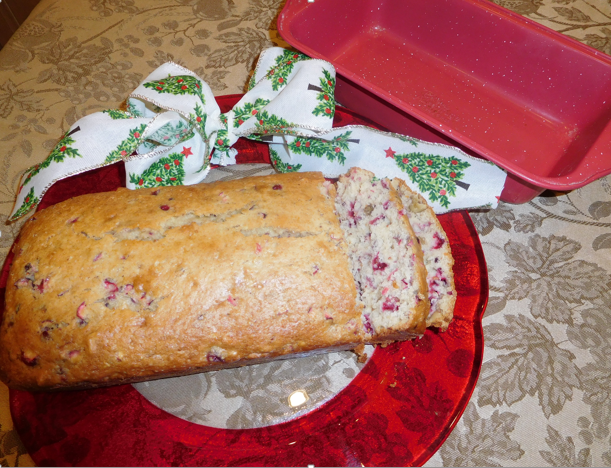 It is that time of year when we think about giving special gifts to the people in our lives that mean the most to us. Your list might include teachers, neighbors, friends and co-workers. Gifts don’t have to be expensive, it is the thought behind the gesture that means the most to your friends and family. Whoever is on your list this year, think about using your kitchen as grand central for gift making. Gifts of food are heart felt and send a message that you spent time making something special that looks good and tastes yummy. These gifts say thank you in a thoughtful way. Don’t forget to include your kids in the process of cooking and assembling gifts to teach them something about budgeting and enjoying the simple pleasure of gift giving.
It is that time of year when we think about giving special gifts to the people in our lives that mean the most to us. Your list might include teachers, neighbors, friends and co-workers. Gifts don’t have to be expensive, it is the thought behind the gesture that means the most to your friends and family. Whoever is on your list this year, think about using your kitchen as grand central for gift making. Gifts of food are heart felt and send a message that you spent time making something special that looks good and tastes yummy. These gifts say thank you in a thoughtful way. Don’t forget to include your kids in the process of cooking and assembling gifts to teach them something about budgeting and enjoying the simple pleasure of gift giving.
The way the gift is presented can be just as important as the food itself. Try to pair up containers with the food gift that will be used after the food is gone. This can be a gift that keeps on giving. Examples are a decorative plate filled with cookies, pie plate filled with your favorite pie or a trifle bowl filled with goodies. You get the idea. Another thought is to put together items that say “sit and take a break” like a loaf of quick bread paired with a pound of coffee, homemade salsa with chips and a favorite beverage. The main goal is to show that you put thought in the gift and spent time preparing the presentation.
With everyone watching their budgets this year, plan ahead to get the creative juices working by purchasing ingredients on sale and found locally. Local products in December include pecans, sweet potatoes, honey, peanuts, persimmons, satsumas and jams and jellies sold at local farmers markets. So get going and unleash your creativity, and give a few gifts from your kitchen and your heart. Have fun making these gifts, and remember to enjoy the process.
One of my favorite festive cookie is the Chocolate Crinkle. The crackle on top with the chocolate and white sugar says it is holiday time. These cookies make a good food gift as they stay firm and will last up to a week. They also freeze well if you need to make ahead of time. Package the gift by placing on a nice festive plate and wrap with clear wrap and decorate with ribbon.
Chocolate Crinkle Cookie
½ cup of shortening
1 2/3 cup sugar
2 tsp vanilla
2 eggs
Two 1 ounce squares of unsweetened chocolate (melted)
2 cups sifted all-purpose flour
2 tsp baking powder
½ tsp salt
1/3 cup of milk
½ cup chopped walnuts or pecans (optional)
Cream together the shortening, sugar and vanilla. Beat in the two eggs then add the melted chocolate. In another bowl, sift together the flour, baking powder and salt. Add flour mixture slowly to creamed mixture alternating with the milk until thoroughly blended. Stir in walnuts. Chill for 3 hours. Form in 1 – inch balls and roll in confectioners’ sugar. Place on greased cookie sheet 2 to 3 inches apart. Bake in moderate oven at 350 degrees for 15 minutes. Cool slightly then remove from pan. Makes 48.
They are now ready to put in a container and give to friends. This cookie freezes well.
Prepare this nut bread then decorate with wrapping and ribbon. You might include the loaf pan as part of the gift. Include a brick of cream cheese along with a decorative butter knife for a complete package.
Cranberry Nut Bread
Ingredients
2 cups all-purpose flour
1 cup sugar
1 1/2 teaspoons baking powder
¾ teaspoon salt
1/2 teaspoon baking soda
3/4 cup orange juice
1 tablespoon grated orange peel
2 tablespoons shortening
1 egg, well beaten
1 tsp vanilla flavoring
1 1/2 cups Fresh Cranberries, coarsely chopped
1/2 cup chopped nuts (walnuts or pecans)
Directions
Preheat oven to 350 degrees. Grease a 9 x 5-inch loaf pan. Mix together flour, sugar, baking powder, salt and baking soda in a medium mixing bowl. Stir in orange juice, orange peel, shortening and egg and vanilla. Mix until well blended. Stir in cranberries and nuts. Spread evenly in loaf pan. Bake for 55 minutes or until a toothpick inserted in the center comes out clean. Cool on a rack for 15 minutes. Remove from pan; cool completely. Makes 1 loaf (16 slices). Bake loaf in decorative pan as part of the gift. Make sure you cool after cooking then replace in pan and wrap as part of the gift.
The Real Sweet Potato Pie
Use local sweet potatoes to promote locally grown produce. After baking, cool then give as a gift in a nice pie plate. Wrap, refrigerate with instructions on reheating for serving. For added effect, bundle with whipped cream and pie knife.
Pre Preparation
Prepare your sweet potatoes for the pie mix. Select 6 – 7 large sweet potatoes and cut in half or quarters. Boil potatoes slowly for about 30 minutes. Let cool. Peel potatoes after they cool. The peel should come off very easy. Measure six cups of sweet potato in a mixing bowl. Use a stand mixer to beat the sweet potatoes and do not scrape off any mixture from beaters. This will contain the stringy part and you do not want it in your pie. Discard the strings.
Ingredients
6 cups cooked mashed sweet potatoes
1 cup evaporated milk
½ cup butter
2 tsp vanilla flavoring
2 tsp nutmeg
1 tsp butter flavoring
4 eggs
1 cup sugar
Mix all ingredients in a stand mixer until well blended. The mixture should be smooth and free of lumps. The mixture will keep in the refrigerator up to a week and may be frozen for future use. Be sure to label with date and amount before placing in freezer.
For the Pie
Place mixture in unbaked pie shell and smooth to the edges. You will need about 2 ½ cups for each 9 inch deep dish pie shell. Mini tart shells may also be used for individual pies. This recipe makes about 3 pies or 12 individual mini pie tarts. Cook at 350 degrees until puffed and browned slightly on top. About 40 minutes.
Visit your local farmers market to purchase local nuts, honey, produce and jams and jellies. Be sure to look for locally grown and support our area growers. For additional information about local produce visit: http://wfrec.ifas.ufl.edu/panhandle-produce-pointers/
by Dorothy C. Lee | Nov 25, 2016
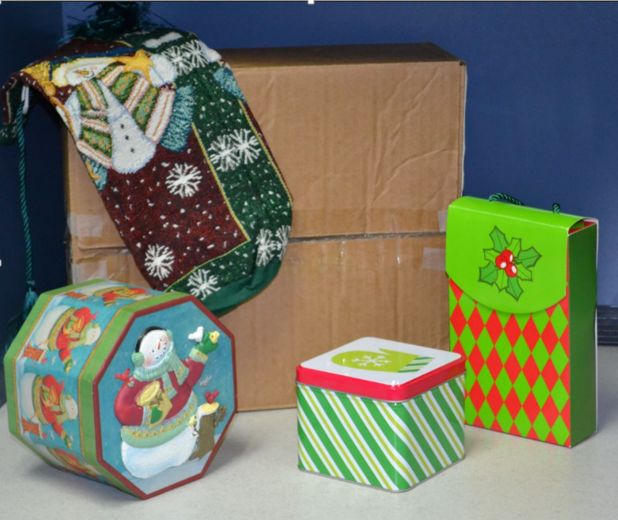 During the holiday season nothing carries good cheer and holiday spirit across the miles like receiving a package full of homemade treats.
During the holiday season nothing carries good cheer and holiday spirit across the miles like receiving a package full of homemade treats.
If you go to the effort of preparing food gifts, you want to be sure the contents arrive in the condition they were sent in. The first step is to pack it right.
- Select a strong sturdy cardboard, plastic, or metal container. Round oatmeal boxes or coffee cans with re-closable lids work well.
- On the bottom of the container place a generous layer of filler, such as crumped tissue paper, waxed paper, brown paper bags or plastic bubble wrap.
- Next, wrap baked goods individually or in pairs placed back to back. Begin with the sturdiest first. Moist, firm baked goods ship better than the brittle kind. Brownies, fudge and moist cookies pack well. Top with another layer of filler and repeat ending with a thick layer of filler.
- Fill the container full so the contents can’t shift when it is shaken.
- Be sure to pack several inches of cushioning material in the bottom of the shipping carton and enough material around, over and between items so that the contents cannot move easily. Brown paper bags and newspaper provide adequate cushioning for most packages. Save Styrofoam peanuts or foam packing pieces in packages for use when cushioning your packages.
- Place a card with the address of the sender and the receiver inside the carton, just in case.
- Wrap the carton in heavy brown paper, if desired, and seal it securely with transparent packing tape. Clearly label the carton; put the transparent tape over the address to keep it from getting wet and smeared. Mark it “perishable” to encourage careful handling. One of the best ideas yet is to give a gift within a gift that serves as its own alternative wrapping. Great tasting recipes become even more special when attractively packaged for giving.
- Embellish small metal coffee tins for packaging tiny truffles or other candies. Replace plastic tops to seal.
- Consider using an empty potato chip canister for packaging. Cover it with Christmas wrapping paper, fill it with cookies, candies or salty snacks, and replace its plastic top to seal.
- Fill a Christmas stocking with a favorite snack mix or nut mix. Package the mix in a re-sealable plastic bag and tuck it and holiday napkins into the stocking.
- Top off decorative jars of homemade desert sauces or jelly with raffia or decorative ribbon. Attach a homemade gift tag and a spoon.
- Bake and transport homemade bread in light weight recyclable aluminum pans available at most supermarkets. Wrap pans of bread with a large linen napkin or place bread in gift bags and tie with holiday ribbon.
- When giving a variety of foods together, include items to be eaten with your goodies or utensils that might be needed for further preparation.
Remember it’s the thought behind the holiday package that counts; the link with loved ones and the knowledge that someone is thinking of you during the holiday season. A package filled with homemade treats says “love” with every bite.
by Marie Arick | Mar 15, 2016

Earth Day is honored around the world on April 22, with many festivals, activities and events being held in in the weeks prior. April 22 marks Earth Day. Help build a better future and preserve Mother Earth by committing to protect our environment year-round.
The origin of Earth Day is linked to the 1969 Santa Barbara, California oil spill. Wisconsin Senator, Gaylord Nelson, envisioned protecting the nation’s environment after the massive oil spill in California. This led to a movement to increase awareness of environmental pollution. Nelson, partnered with Congressman Pete McCloskey and Denis Hayes of Harvard University to put the Earth Day plan in motion. Earth Day, April 22, 1970 was the catalyst to increase environmental awareness and led to the establishment of the Environmental Protection Agency (EPA). Hayes further expanded the Earth Day movement in 1990 into a global event.
Why do we need an Earth Day? Because it works! Earth Day broadens the base of support for environmental programs, rekindles public commitment and builds community activism around the world through a broad range of events and activities.
What can I do for Earth Day? The possibilities for getting involved are endless! Volunteer. Change a habit. Plant a garden. Do something nice for the Earth. April 22 marks Earth Day. Mark your calendar to attend an event or do something positive to preserve your little piece of Mother Earth.
A few Earth Day Events
Earth Day Bay County, April 9, 2016 10 am to 4 pm at McKenzie Park. The University of Florida’s Museum of Natural History will host an Earth Day Exploration on Saturday, April 16, 2016 from 10 am to 3 pm. Earth Day Pensacola, April 23, 2016 10 am to 4 pm. .
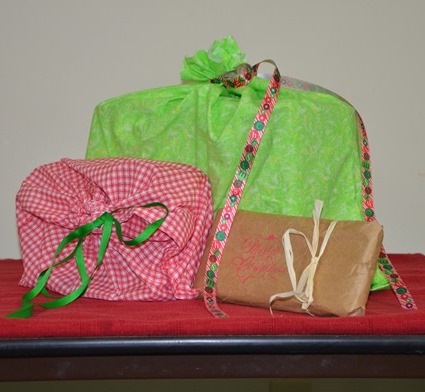
by Shelley Swenson | Nov 25, 2015
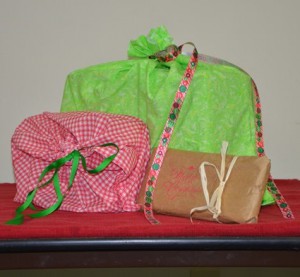
Green Gift Giving
The holiday season will soon be upon us. A “Green“ Holiday focuses on finding ways to reduce consumption by using renewable resources and reusing or repurposing objects. Practicing these principles can fit in line with holiday celebrations, making it a time of sustaining traditions as well as helping the environment. Here are some fun ideas for “greening“ your holiday season when it comes to wrapping gifts.
It is not about sacrifice; it is about an opportunity to…..
- Wrap gifts with brown paper bags, newspaper, or reused wrapping paper.
- Create personal wrapping paper with stamps or collages, or drawing on paper bags.
- Avoid wrapping altogether and tie a large bow around an item instead.
- Make the wrapping part of the gift such as using reusable tins, planting pots, or new towels.
- Give presents or gift certificates from local businesses.
- Focus on homemade or non-traditional gifts such as baked goods, plants, fishing licenses, dance classes, travel mugs, local art, or battery chargers.
- If giving appliances or electronics, make sure they are Energy Star-certified.
- Make donations in someone’s name to charities or conservation organizations. Investigate to see if any organization in the area is offering an alternative giving holiday festival.
- Give “time”. Help an older relative with difficult chores or take children to a park.
- Teach someone a skill or talent you have.
Investing time and creativity into the holiday can help make it more fulfilling and meaningful for you, your family, and your friends.
by Angela Hinkle | Oct 28, 2015
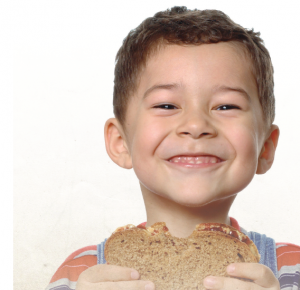
Happy Child with Peanut Butter Sandwich
November in the Panhandle of Florida. Time for pumpkins, cooler weather, hay rides, football games, harvesting cotton and peanuts, and of course, Thanksgiving. It’s also time for the annual Peanut Butter Challenge! We gather peanut butter to give to those who could use a little help feeding their families. Why peanut butter? It is the most requested item in food pantries, it’s shelf stable – you don’t have to heat it up or keep it cold, people like it – a lot, it’s economical – especially if it’s a buy-one-get-one-free (BOGO), it’s local – peanuts are the biggest crop in the Florida panhandle, and it’s healthy – a great source of plant-based protein.
So what about Jane? Jane’s been a consistent contributor to the Peanut Butter Challenge every year. This may not seem like a very big deal, but you see, Jane is allergic to peanut butter. This may not seem like such a big deal either, but to me, it’s like giving time to help out the blood drive even though you can’t give blood, walking in Relay for Life to show support for cancer research though you have no money to give, giving money to a charity because you have it and it feels like the right thing to do.
So whether you give because of your competitive spirit – “my group can give more than theirs”, you have a couple extra dollars and there is a BOGO, because it makes you feel good knowing how much the receiving families appreciate it, or you just feel like it’s the right thing to do, please give to the Peanut Butter Challenge.
And be thankful – for peanut butter … and Jane.
To find out more about the Peanut Butter Challenge or how you can give by November 25, please contact your local UF/IFAS Extension County office in the Northwest District UF/IFAS Extension Office.

by Shelley Swenson | Oct 2, 2015
 Did you know that Floridians throw away 8 pounds of garbage per day? That is double the national average. This is not something to be proud of but it leaves a lot of room for improvement!
Did you know that Floridians throw away 8 pounds of garbage per day? That is double the national average. This is not something to be proud of but it leaves a lot of room for improvement!
Many times when I frequent my housing facility’s dumpster, a computer will be sitting by the side. Does someone think that another resident will take care of properly disposing of it? Think again – it probably will end up in the landfill and will remain there for years. What a waste!
Electronic products are made from valuable materials, including metals, plastics, and glass, all of which require energy to mine and manufacture. Donating or recycling consumer electronics conserves our natural resources. Recycling one million laptops saves the energy equivalent to the electricity used by more than 3,500 homes in the U.S. in a year. For every one million cell phones we recycle, 35,000 pounds of copper, 772 pounds of silver, 75 pounds of gold, and 33 pounds of palladium can be recovered.
Before you donate or recycle your used electronics, do the following:
- Consider your purchase of a new device – could you upgrade the hardware or software instead of buying a brand new one?
- Delete all personal information.
- Remove any batteries; they may need to be recycled separately.
And now the question is where to donate or recycle items? Many manufacturers and retailers offer several options to donate or recycle electronics. Go to www2.epa.gov/recycle/electronics-donation-and-recycling for instructions offered by many companies on where/how you can recycle mobile devices, personal computers, and even televisions.
Think about it…..with just a little more effort, another item can be saved from our already overloaded landfills. You can be a part of the solution for cutting down on waste in Florida.
 It is that time of year when we think about giving special gifts to the people in our lives that mean the most to us. Your list might include teachers, neighbors, friends and co-workers. Gifts don’t have to be expensive, it is the thought behind the gesture that means the most to your friends and family. Whoever is on your list this year, think about using your kitchen as grand central for gift making. Gifts of food are heart felt and send a message that you spent time making something special that looks good and tastes yummy. These gifts say thank you in a thoughtful way. Don’t forget to include your kids in the process of cooking and assembling gifts to teach them something about budgeting and enjoying the simple pleasure of gift giving.
It is that time of year when we think about giving special gifts to the people in our lives that mean the most to us. Your list might include teachers, neighbors, friends and co-workers. Gifts don’t have to be expensive, it is the thought behind the gesture that means the most to your friends and family. Whoever is on your list this year, think about using your kitchen as grand central for gift making. Gifts of food are heart felt and send a message that you spent time making something special that looks good and tastes yummy. These gifts say thank you in a thoughtful way. Don’t forget to include your kids in the process of cooking and assembling gifts to teach them something about budgeting and enjoying the simple pleasure of gift giving.






